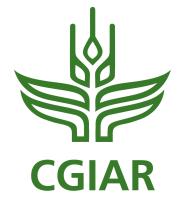Resource information
In the Blue Nile basin, crop cultivation is predominantly rainfed and water availability is highly variable across both space and time. As a result, it often constitutes a limiting factor for reaching full agricultural potential in the region. While one third of the basin is estimated to have no soil moisture limitations, the remaining two thirds are crop water constrained in various ways. Analysis shows that across approximately 40% of the basin available soil moisture is utilized sub-optimally with smart management and crop water limitations can be alleviated. In contrast, across a further 25% of the basin, water deficits strongly limit plant growth. While rainfed agriculture is still possible in some of these areas, appropriate management is even more important. A great deal of variation also exists in terms of market access for agricultural inputs and produce. Travel time to markets in the basin can be up to 12 hours. One’s distance to market centres influences the accessibility of farm inputs such as fertilizers, improved seeds and veterinary services. Inaccessibility vs. accessibility to population dense areas also determines the potential for agricultural production and the marketing of crops and livestock products, in particular for perishable produce. To capture the complexity and heterogeneity regarding both crop water limitations and agricultural market access, this study combines information on rainwater management potential and market proximity to map so-called water investment domains (WID). Context-specific recommendations for each of the domains are provided. In the short term, the results point to a need for agricultural produce strategies that are spatially differentiated and in the longer term for investment in infrastructure in order to enable full utilization of the agricultural potential across the entire basin. The results are intended to guide policymakers and other rural development actors in the identification of appropriate investment decisions and for improved planning of rural development strategies. Thus, the study aligns to the ‘water-centred agricultural growth’ strategy adopted by the Ethiopian Government, developed in response to the poverty and food security challenges faced in the country. The approach is widely applicable, easily replicable and can be used to inform decision-makers beyond the Blue Nile basin.



